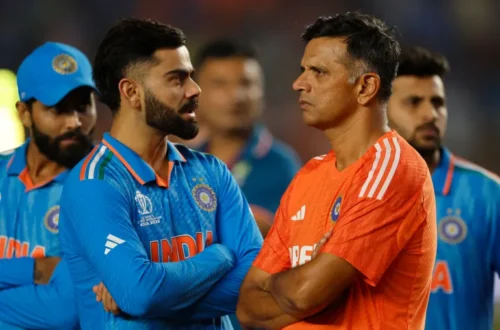
Shardul Thakur – A Look into the Partnership Breaker Tag

Welcome to another interesting discussion. The hot discussion topic, the man in the focus again, is Shardul Thakur! Lets get to the common narrative without any judgement. Shardul Thakur is a partnership breaker. He picks wickets even though he goes for some runs. Since we have already done an analysis on Thakur’s batting ability and utility at no. 8 in ODIs (read here), it is time to get in to what he offers with the ball and whether the popular narrative stands up to scrutiny.
Table of Contents
Context
Lets set some context for the ground rules. What we consider as a partnership. For an ODI we think anything above 40 runs can be considered a set partnership which can prove dangerous if not broken in time. Again, this is not an empirical definition but a one based on judgement to keep things simpler.
What we want to look at is, that whether Thakur actually breaks partnership or not and does breaking those partnerships have any impact on the match. Does it help or is it one those inconsequential dead rubber things which have no impact?
We will also look at other bowlers and how they fare overall in terms of picking wickets and runs conceded.
We have considered all ODIs up till the start of Asia Cup 2023 which comes to ODIs he played between 31st Aug 2017 till 1st Aug 2023.
Partnership Breaking Wicket: Any wicket which was taken when the partnership was 40 runs or more.
Match Impact: Whether any performance resulted in India winning the match
Overall Stats
| Player | Mat | Inns | Runs | Wickets | BBI | Econ | Wkts/Inn |
| Shardul Thakur | 38 | 38 | 1692 | 58 | 4/37 | 6.16 | 1.52 |
Shardul Thakur – The Partnership Breaker
So lets get down to it. Frankly, there is no easy way to do this and we had to look at each match individually where Thakur picked up any wickets. That comes to 31 innings.
Innings by Innings we looked at the performances, partnerships (of 40+) being broken and the match impact.
Analysis Insights
- Out of the total 58 wickets 14 wickets fell into the category of partnership breaking ones (where partnership was 40 and above when the wicket was taken) which is ~24% of all his wickets.
- 7 matches (out of 38) his performance had a positive match impact. Either India won or was able to take the match close. ~18%
- 1 positive impact against SA
- 2 positive impacts against WI
- 1 against NZ
- 2 against Eng
- 1 against Bangladesh
- In 4 matches, he picked up wickets, but he bled away so many runs that it actually cost India the match.~10.5% Comparing this with positive match impact the ratio of negative impact to positive impact comes out to 0.57. Which effectively means that for every 2 matches he wins for India he makes India lose 1 match.
- 3 negative impacts against NZ
- 1 negative impact against SA
- On 3 instances he did bowl well and India won closely but his giving away runs was the reason that the match became so close. These have not been counted either as positive impact nor as negative impact.
- 28 wickets against WI, ZIM, BAN SL in 17 matches 1.6 wickets/inns and 30 wickets against NZ, SA, Aus, Eng in 20 matches 1.5 wicket/inns. This indicates that he does well against weaker teams.
- All his negative impacts have been against stronger teams
- 3 out 7 positive impacts have been against weaker teams.
- Only on 7 occasions has he bowled his full quota of overs.
Comparisons with other Bowlers
Below are the stats for the 2 year period before the start of Asia Cup. Since Ashwin has not played much in the last two years we have taken overall stats for Ashwin.
| Mat | Inns | Runs | Wickets | BBI | Econ | Wkts/Inn | |
| Thakur | 25 | 24 | 900 | 37 | 4/37 | 5.7 | 1.54 |
| Shami | 12 | 12 | 446 | 15 | 3/17 | 5.3 | 1.25 |
| Chahal | 16 | 14 | 670 | 24 | 4/17 | 5.5 | 1.5 |
| Prasidh | 11 | 11 | 424 | 19 | 4/12 | 4.86 | 1.73 |
| Ashwin* | 113 | 111 | 5058 | 151 | 4/25 | 4.9 | 1.4 |
Lets take a deeper look at the above. It throws few premises out of the window.
For starters, the tag of Thakur being a wicket taker and singling him out for in this implies that he picks up more wickets than others even if he gives away runs. But from the above table it is clear that it is not the case. All of the bowlers above are comparable in terms of wickets per innings and even more remarkably so, they have much much better economy. Now wickets with good economy is a match winning combination and for all limited overs economy should be given its due.
Someone like Ashwin has picked up wickets equally well despite the fact that last few months in ODIs he did not pick enough and was the reason he was dropped, we see that even then he is much better over a prolonged period. And Ashwin has better numbers with the bat as well in ODIs at no. 8. Refer to our batting analysis for Thakur here.
And lets not even debate how better Shami is as a bowler and even his batting numbers are better than Thakur in ODIs which you can check in the analysis linked earlier.
Conclusion
The data and facts are clear. There seems to be no rationale to compromise a genuine bowler to play Thakur. His batting doesn’t add value and his bowling does sometimes contribute positively but almost equally it has a negative impact and there are clearly other better bowlers who can impact more in his place.





